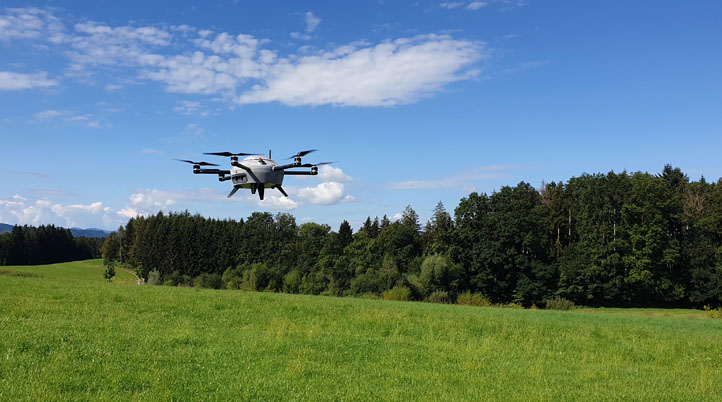With support from Thales, Meteomatics, a Swiss weather service provider, is looking into the use of small rotary wing UAVs to replace traditional weather forecast tools, like balloon soundings and satellite-borne, airborne, or ground-based remote sensing techniques.
Traditional weather forecasting tools and techniques can be relatively expensive, provide limited mobility, fail to collect data in adverse conditions, and some are designed for specific use cases. According to Meteomatics, small UAVs do not suffer these issues and can improve the information gathered within the planetary boundary layer (PBL) by directly and accurately measuring prognostic variables. By aggregating existing national weather data with its own drone data measurements, Meteomatics can provide very precise measurements of the mid and low atmosphere.
With the development of two different drones, the Meteodrone MM-641 and MM-670, which provide different characteristics and advantages for operational applications, Meteomatics has built an observing system capable of measuring detailed vertical profiles of temperature, humidity, air pressure, and wind. This means the company can help to determine the potential for severe weather formation and enhance the forecasting ability for atmospheric conditions such as hail, icing, and fog formation, among others. Additionally, Meteomatics developed the Meteobase, a water- and snow-proof ground station that allows the on-site support of Meteodrones by serving as a communication element between the control center and the UAV.
As the company behind ECOsystem, a platform that enables ANSPs, airlines, and airport operators to plan, monitor, manage and assess aviation operations, Thales knows the importance of collecting reliable weather forecasts and accurate meteorological information due to how fog, freezing rain, thunderstorms, heavy wind and drop in temperature can significantly affect safety and productivity. Not only does weather uncertainty affect drone operations, but it can also affect many other industries and sectors, ranging from aviation to renewable energy and transportation. Thales believes Meteomatics’ solution can help to minimize risks, increase safety, and reduce operating costs in air traffic management, radar reconnaissance, and optimization of control and signaling for railways.
Having successfully demonstrated the positive effect of mobile Meteodrones on the quality of high-resolution local fog and storm forecasts, Meteomatics wants to target altitudes of 8000m AMSL, tackle higher operational wind speeds, and proceed to the internationalization of display units. In the coming months, the company will deploy several automated Meteobase systems in Eastern Switzerland to further test the orchestration of an automated Meteodrone network and feed the new data operationally into Meteomatics’ high-resolution weather model.
While the most predominant topics of the drone industry may be surveying & mapping, inspections, construction, and a few others, it’s always interesting to see some companies explore how drones can make a difference in less explored industries, such as meteorology. In the past few years, Commercial UAV News has written about different developments in the area, such as drone weather risk management frameworks, using swarms of drones to research hurricanes, and conducting meteorological profiling of wildfires. Meteomatics adds another layer to the field of meterological study.















Comments